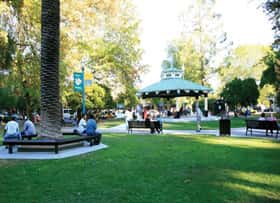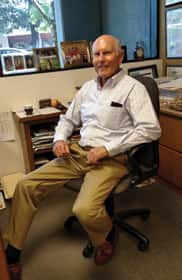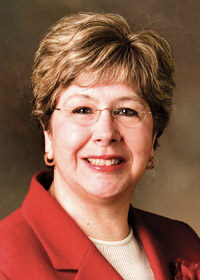
Sonoma County has become one of the most desired places to live in the state of California. But with a lack of new development or affordable housing, many are finding it difficult.
“The grapes on a score of rolling hills are red with autumn flame. Across Sonoma Mountain, wisps of sea fog are stealing. The afternoon sun smolders in the drowsy sky. I have everything to make me glad I am alive. I am filled with dreams and mysteries. I am all sun and air and sparkle. I am vitalized, organic.”––Jack London
The natural beauty of Sonoma Valley was not lost on American novelist Jack London, who vacationed in the area one year and fell in love with the land. He was drawn to its magnificent landscape¾the hills, fields and streams and the beautiful mixed forest of oaks, madrones and redwood trees. In 1905, he bought his first 130 acres in Glen Ellen for $7,000 and then gradually added six more parcels. He named his 1,400 acre property Beauty Ranch, hoping it would become a successful enterprise.
“Jack London had an incredible, indomitable spirit,” says Susan St. Marie, director of program and volunteer management at Jack London State Park. His persona was legendary. “He had a few failures along the way, but he was inventive, imaginative and a risk taker.”
Among his failures was a grove of eucalyptus trees, planted on his property, hoping it would result in a valuable cash crop, (as it was believed to be at the turn of the century because the trees grew quickly and could be cashed in for lumber). But there are many varieties of eucalyptus trees, and London bought the wrong variety. “The wood twisted and split, and wasn’t suitable for lumber,” says St. Marie. Most of the trees were eventually removed, but the land remained and it was one of his most precious assets during his lifetime. He once wrote this message in a letter to his publisher, George P. Brett of Macmillan Company: “Next to my wife, the ranch is the dearest thing in the world to me.”
Today, Sonoma County is America’s number one Wine Country destination and home to about 500,000 people, who are as passionate about the area’s unique terrain as London was. Sonoma County offers three distinct regions: rivers and redwoods; valleys and vineyards; and more than 55 miles of stunning coastline along the Pacific Ocean. About 7.5 million tourists visit the area each year, according to Sonoma County Tourism.
Located 45 minutes north of San Francisco’s Golden Gate Bridge, Sonoma County is well known for its mild Mediterranean climate and for producing some of the world’s finest wines. During summer, the sky is wide and blue, and the air is fresh and fragrant with the scents of lavender, rosemary and eucalyptus. And during winter, the hills turn a velvety green. The coastal fog that settles in the valleys and hills on occasion throughout the year creates a luminous glow.
Over the last few decades, Sonoma County has developed tremendously, according to Sonoma County Connections, a relocation website guide. The county is home to ten small cities and many incorporated areas. Santa Rosa is the largest city and county seat. Sonoma County continues to draw professionals in health care, technology and the business world as well as an eclectic population. There are, for example, ranchers and growers; entrepreneurs; artists and musicians; single professionals; married couples; and families wanting to raise their children in a country setting. Business Week ranked Santa Rosa number 14 in best places to live for Generation Y’ers, due to the city’s high number of creative professionals and single people concentrated in a small region.
Sonoma County is a high-demand region, says Robert Eyler, Ph.D., a professor at Sonoma State University (SSU) and director for regional economic analysis. “From a lifestyle standpoint, there are the mountains; beach and Wine Country; and the weather is amazing. Plus it’s close to San Francisco, a global job center—but housing, traffic and commuting are gigantic issues.”
Though there’s an assortment of housing options to choose from in the area, including downtown apartments, beachfront houses and condos, suburban homes and country properties, Sonoma County has its struggles. Land is increasingly scarce, housing is costly in comparison to other parts of the country, rental prices are skyrocketing, and commercial real estate is limited. Here’s an overview of what’s happing in real estate, rental housing and land preservation in Sonoma County.
The state of real estate
 The recent recession was related to the bursting of real estate bubbles in Sonoma County and around the world throughout the 2000s. Since then, the real estate market in Sonoma County has slowly been making a comeback, and there was a definite upswing in activity earlier this year.
The recent recession was related to the bursting of real estate bubbles in Sonoma County and around the world throughout the 2000s. Since then, the real estate market in Sonoma County has slowly been making a comeback, and there was a definite upswing in activity earlier this year.
But at the dawn of 2016, the market appears to be slowing down a bit, says Eyler. “People are waiting to see if interest rates rise, and they’re more cautious with money. We’ve had price upswings, and the excess demand was playing itself out. The market has stabilized. Supply and demand have met.”
“Inventory remains tight partly due to no new home construction to speak of for the last eight years which is challenging for buyers,” says Rick Laws, senior vice president of Pacific Union Christie’s International Real Estate in Santa Rosa. “We’re moving toward a more balanced market evidenced by fewer multiple offers and a slight increase in the number of available homes for sale.” 
Nevertheless, rental prices soared, making it difficult for many Sonoma County residents to find affordable housing. “When our housing supply became affordable during the recession, our population grew and more homes were sold. We haven’t had time to build up the supply,” says Ben Stone, executive director of the Sonoma County Economic Development.
Why is there a lack of housing? According to Eyler, it’s a result of three major issues. First, developers don’t have accessible land to produce a number of units that makes economic sense. Second, there are concerns regarding natural resources such as water. And finally, the sieve through which developers must pass before construction can begin is long and costly. Says Eyler, “It’s not because of a lack of demand; it’s due to supply conditions that are rising in cost and time.”
The reason housing can be a struggle is because of conflicting incentives, adds Eyler. “Those who want [the county to build] affordable housing can’t make the economics work out for the developer. The developer needs to make a profit and wants to develop a mix of housing that will let them market to various income and demographic groups,” he says. “Land use and where to put [such projects] is another classic vector that slows the works. Those who’re concerned over land use are sometimes those who’ve profited from housing. Local governments want the improvements for more property taxes, but don’t want the medium–and long-term political headaches of traffic, density and fights over resources.”
Why is land so limited? This is a regional problem affecting the entire Bay Area, says Stone, but comparatively, Sonoma County is still much more affordable. “More people want to live here than land is available. We’re not like Sacramento or Fresno,” says Stone. “We have geographical limits. We have hills and urban growth boundary lines and land that ends at the coast. There are also government restrictions; a lot of regulations and fees to building a house. The average fee for a housing permit in some cities is more than $50,000. And because many people like to live near water, the limited land supply and expensive housing situation is true for the entire west coast, including California, Oregon, Washington and British Columbia.”
Can a lack of affordable housing and high rents hurt a community? “Yes, and there’s no easy answer,” says Stone. “Many people want to live in coastal California, where land is relatively scarce thus, fees are high. If there were easy solutions, we’d be doing them. Most housing is located in the cities, and city councils along with the county board of supervisors are doing everything they can. It’s front and center on every local government agency agenda.”
“When low-income people can’t find decent, affordable housing, their quality of life suffers, leading to many secondary consequences to society. Longer commutes to find cheaper housing pull at families, the high cost of living locally (in poor housing) worsens the family’s health and their children’s future,” adds Burbank Housing Development Corporation’s Executive Director Chuck Cornell. “Society pays with increased health care costs, violence and crime.”
Residential real estate
In real estate vernacular, the term “months’ supply” is defined as the number of months it would take to sell all current inventory at the current rate of sales, explains Laws. At the end of September, it took two months to sell the current inventory. When it takes four to six months to deplete the current inventory at current sales rates, that’s considered a balanced market.
“The inventory of homes priced $400,000 has decreased significantly as sales above $500,000 have increased,” he says. “Real estate markets typically recover from the lower price ranges and work their way up the market. One might venture that our market has ‘recovered’ by that measure, as activity has increased significantly at the upper price ranges.”
According to Laws, the median prices for homes in Sonoma County plateaued and remains flat since April within a few thousand dollars of $545,000. “I expect we’ll see about a 10 percent median price increase for the year, the average median for the year remains at $517,000, still below a median high of less than $600,000,” he says.
“Sellers have been experiencing overbids on homes priced at the current market value, and a slower return when they push the market value of their own property,” adds Sherri Cooper Johnston, a real estate consultant and property manager for Coldwell Banker in Healdsburg. “Ultimately, the buyers determine the market value, and we’re seeing the market beginning to plateau. So now isn’t the time for a seller to reach for a higher price than recent comparable sales.”
According to Mark Bryant, general manager of Healdsburg & Artisan Sotheby’s International Realty “Home prices have started to flatten after five years of large increases. But affordability is becoming an issue with less than 25 percent of Sonoma County residents being able to qualify for a median home price, which sits at $548,840 as of October 2015.”
When asked who, exactly, is buying the available properties, he says,
“Most of the homes are being purchased by homeowners. The luxury home market seems to be a mix of homeowners with a lot of second home buyers. It doesn’t seem these are being used as rentals, vacation or otherwise.”
There have been many technological advances in the real estate market in recent years. Bryant says “We’re seeing more and more millennial buyers entering the market, and they use mobile devices such as their phones and tablets to access possible listings. They’re very well-informed about available properties. Realtors today have to be on top of their game in order to keep up with today’s homebuyers and sellers.”
Bryant predicts the 2016 market will probably see “a continued but modest price increase of 3 to 4 percent, as well as a small increase in the inventory.” But, as always, “There are a lot of variables in what might actually happen.”
 Officials in Healdsburg are currently modeling their city similar to Carmel, Calif., meaning there will be changes ahead in the next few years as downtown Healdsburg is further developed with a large roundabout with 10 or more lanes accessing it and hotels. The city will also move to paid parking in the downtown area, according to Cooper Johnston.
Officials in Healdsburg are currently modeling their city similar to Carmel, Calif., meaning there will be changes ahead in the next few years as downtown Healdsburg is further developed with a large roundabout with 10 or more lanes accessing it and hotels. The city will also move to paid parking in the downtown area, according to Cooper Johnston.
Real estate in Healdsburg will continue to increase in value. Currently, homes within walking distance of the downtown area are in high demand. With he average price for a two-bedroom, one-and-a-half bath home with a patio and manicured lawn topping $1.1 million. Fixer-uppers are generally priced in the $600,000 range. A high-end estate with property, a pool and a vineyard is currently going for more than $3 million.
What can we expect in the future?
Demand for homes will remain strong through 2016 with no shortage of eager buyers for well-priced properties, says Laws. “Home prices will likely remain at current levels before rising again in the spring [of 2016]. What happens in the next five years, will depend on the strength of the economy, but, barring any outside global catastrophes, supply and demand will continue to drive prices higher until affordability puts a ceiling on the number of qualified buyers.”
“We’ve seen sales prices level off. If you’re on the fence, now is a good time to make a move,” says Cooper Johnston.
“Get in if you can,” advises Laws.
Commercial real estate
Commercial real estate in Sonoma County is at a standstill. The demand side of the market is good; it’s diverse and gradually growing, according to Al Coppin, president and founder of Keegan & Coppin Company, Inc., but the supply side limited in terms of office buildings and industrial space. “It’s reducing our potential to bring new companies to the area,” he says. “We need the commercial space for companies looking in various marketplaces. We need large chunks of space and land where they can start businesses and expand. We’re short-sighted in terms of providing development opportunities in the next 20 years.”
According to Coppin, social media, software, technology and animation companies have attempted to  gain footholds in the area, but then backed out. “We’re known as a negative growth area,” he says. “For Sonoma County to grow jobs, [government officials] need to back off on fees and not put the financial burden on consumers or those developing land for commercial enterprises.”
gain footholds in the area, but then backed out. “We’re known as a negative growth area,” he says. “For Sonoma County to grow jobs, [government officials] need to back off on fees and not put the financial burden on consumers or those developing land for commercial enterprises.”
Currently, there are some build-to-suit projects in the offing and office expansions being undertaken by local health care professionals. Says Coppin, “Health care has seen a big demand for office space for the last eight years or so.”
But there’s plenty of room to expand commercial spaces, and Sonoma County can and should expand office and industrial space, says Coppin. “There’s 100 million square feet of office, industrial and retail space in the three [North Bay] counties,” he says. “Sonoma County has 57 million square feet of that total and is a measure of the economic impact of the county. There’s a lot of room to grow, and having an industrial-based growth is an important part of the economy. Without industries to grow, we won’t have jobs for the growing population. We need to consider spreading out into the suburbs, because that’s the most efficient way to encourage jobs for our population and for growth to continue. It’s not about turning Sonoma County into an urban center like San Francisco.
The cost of development regulation in Sonoma County is so high it deters developers from taking risks to develop more commercial space on the remaining land we already have, Coppin says. “I’d like our political leaders to take positions encouraging commercial growth. That doesn’t mean shopping centers, but economic-based industries. The supply must be ahead of the demand to have that growth occur. We need to make it less difficult for developers, because they provide the infrastructure to grow.”
Rental market
If you follow the headlines, then you know rents continue to rise in Sonoma County. “The rental market is extremely strong. Properties are often rented before hitting the market, especially in Healdsburg,” says Cooper Johnston. “There’s talk across Sonoma County of imposing rent controls.”
Case in point: a two-bedroom, one-in-a-half bath condominium in Healdsburg is currently renting for more than $2,000 per month. And rents will continue to increase, she says.
 Nevertheless, there are landlords who continue to keep rents reasonable. Typically, rents increase as tenants move out. “Most landlords don’t give $100 [per month] increases to current tenants,” says Cooper Johnston, because they likely can’t afford it. “Landlords take the opportunity to improve their properties when a tenant vacates and increase the rent by $300 or more for their next resident.”
Nevertheless, there are landlords who continue to keep rents reasonable. Typically, rents increase as tenants move out. “Most landlords don’t give $100 [per month] increases to current tenants,” says Cooper Johnston, because they likely can’t afford it. “Landlords take the opportunity to improve their properties when a tenant vacates and increase the rent by $300 or more for their next resident.”
“Fixing up a property and bringing in new applicants is the best way to achieve a higher rent for a home,” she says.
What can we expect in the near future in terms of rent prices?
“Rents will continue to rise unless there are rent controls put in place, but that won’t likely happen in the next year or two,” says Johnston. What’s her best advice? “Renters should stay where they’re at and take advantage of their lower monthly rent, or buy a home right here, right now. Don’t leave the county if you want to come back, because it’s a difficult market to come back to.”
Earlier this year, the Santa Rosa City Council considered a moratorium on rent increases. Four of the seven council members were ready to follow through, but the measure needed five votes to pass.
“We’ve hired a consultant to analyze the cost and efficacy of various programs recommended by council members and the community,” says Santa Rosa Mayor John Sawyer. “It’s a complex problem, and a major part of it stems from a lack of inventory. We’re expecting the results of the consultant’s work to be available by the end of January. There are pros and cons to rent control, depending on your situation. That’s why it’s important that the decisions the council makes have the highest positive impact with the least negative consequences.”
Is rent control a viable solution? “This question has come up a lot in the last 12 months,” says Eyler. “We recognize there’s a social problem when wages don’t keep up with housing costs. Some people are combining households, but there has been some exodus, too. We’ve let market forces dictate that. At this point, it’s both a social and economic problem.”
Rent control can reverse incentives and slow down other parts of the economy, Eyler says. “On the other hand, if wages don’t keep pace with housing costs, then there’s a need for affordable housing. It’s very tough. There’s no magic bullet. There’s no easy social outcome.”
“We’re in a situation where our community leaders and government need to take immediate action to create housing supply,” says Laws. “But even if that happens, rents are going to have to be high enough to create an economic demand to build. Our economic recovery needs to be strong enough to create wage growth, not just job growth.”
There’s growing concern among Sonoma County employers as to how they can attract and retain their employees. The NBLC represents more than 25,000 employees in need of workforce housing, so the organization is a strong advocate of finding practical solutions to the housing crisis in Sonoma County. However, the organization opposes rent control for numerous reasons. “More than 93 percent of U.S. economists, who virtually never agree, found that rent control does more harm than good,” says Cynthia Murray, president and chief executive officer of the North Bay Leadership Council (NBLC). “They believe rent control leads to the creation of less housing, raises rental rates and increases urban blight.” (See “The Problem with Rent Control,”).
employees. The NBLC represents more than 25,000 employees in need of workforce housing, so the organization is a strong advocate of finding practical solutions to the housing crisis in Sonoma County. However, the organization opposes rent control for numerous reasons. “More than 93 percent of U.S. economists, who virtually never agree, found that rent control does more harm than good,” says Cynthia Murray, president and chief executive officer of the North Bay Leadership Council (NBLC). “They believe rent control leads to the creation of less housing, raises rental rates and increases urban blight.” (See “The Problem with Rent Control,”).
Affordable housing
The need for affordable housing in Sonoma County is front and center these days. “Affordable housing has become more visible in the past couple years with more press [coverage] on rising rents and increased homelessness,” says Burbank Housing’s Cornell. “We speak regularly in public forums about the scale of the problem and highlight that our wait list has grown to more than 7,000 families, though we only turnover about one apartment per day.
What’s the difference between low-income housing and workforce housing?
“Low-income people are increasingly the backbone of the workforce. They fill jobs in the service sector and other lower-skilled areas of the local economy,” says Cornell. “We often hear the term ‘workforce housing’ as though it were different from ‘affordable’ or ‘low-income housing.’ However, all our tenants [except, to some degree, seniors or people with special needs] must have a source of income to qualify for our housing and are certainly part of the ‘workforce.’”(See “Do You Qualify?”)
“We’re considering changing the term ‘low-income’ to ‘limited-income, in our mission statement’” Cornell adds. “As housing becomes increasingly expensive in this area, many you wouldn’t expect are having a hard time affording even a basic apartment. These can include teachers who fill a vital role in society. In a capitalist society, there will always be some who work for lower wages and they need decent housing to remain a productive part of our community. Meeting this need is a reality we need to come to grips with.”
 Just as residential real estate remains tight these days, low-income housing is extremely scarce, but for a different reason¾the lack of government financing, according to Cornell. “While the for-profit real estate market is driven by the interplay of the supply of housing compared to the demand from buyers or tenants, the affordable housing market is driven by the availability of financial subsidies that makes the housing affordable to the buyer or tenant,” explains Cornell.
Just as residential real estate remains tight these days, low-income housing is extremely scarce, but for a different reason¾the lack of government financing, according to Cornell. “While the for-profit real estate market is driven by the interplay of the supply of housing compared to the demand from buyers or tenants, the affordable housing market is driven by the availability of financial subsidies that makes the housing affordable to the buyer or tenant,” explains Cornell.
“Local government officials are certainly focused on and dedicated to finding solutions,” he continues, “Based on the failure of recent state legislation and continued funding cuts at the federal level, it will likely be a while before we see funding for affordable housing at prerecession levels.”
Over the last 35 years, Burbank Housing has built more than 2,800 affordable rental units at almost 60 properties in Sonoma County, from Sea Ranch to Sonoma. What’s more, it’s built and sold more than 800 affordable homes in 33 subdivisions throughout the county and is currently selling the last phase of its 60-unit Catalina Townhomes project in southwest Santa Rosa. “We’re able to make this housing affordable to low-income people¾those making less than 80 percent of Area Media Income¾by investing government funds in these properties,” he says. (Burbank Housing considers housing “affordable” when someone spends no more than about 30 percent of their income on rent or mortgage. See “What is AMI?”)
Ironically, though there’s tremendous pressure to help first-time buyers Burbank Housing serves, only about 7 percent of applicants (55 out of 800) have the borrowing power to qualify for a reduced first mortgage at Catalina. “Generally, the others are carrying too much debt from the great recession,” he says. “So, we’re having a very hard time finding enough qualified buyers and still have homes to sell.”
Affordable housing is a leading concern among Sonoma County’s largest employers. “Our biggest concern is our ability to retain and attract employees. We have a talent shortage,” says Murray. “The lack of workforce housing is limiting our ability to grow. We’re in big trouble. We haven’t kept up with the demand for new housing¾for sale or rent—in decades.”
Searching for solutions
NBLC is an employer-led public policy organization that represents leading employers in the North Bay such as Kaiser Permanente, Keysight Technologies, Santa Rosa Junior College, Sutter Santa Rosa Regional Hospital, Sonoma State University and more.
Its goals include regional prosperity and improving quality of life by focusing on education, economic competitiveness, transportation and sustainability.
“Since Sonoma County is considered an affluent area, it’s very difficult to compete nationally for federal tax credits to build affordable housing. The loss of redevelopment funding at the state level removed a primary source of state funding affordable housing, too,” Murray says.
Lately, job growth in Sonoma County has been centered on low-income jobs in retail, hospitality and services, adds Murray. “[These jobs] don’t provide a salary commensurate with what it costs to live here, so there’s a disconnect. There’s a big gap between pay and housing costs.”
What’s the solution for employers looking to attract and retain talent?
NBLC is currently working with employers to provide viable options, based on their level of capability. For example, recent strategies include encouraging employers to use excess property for housing, providing rental subsidies and offering workshops for first-time homebuyers. “We’re supporting new housing and stepping up to express support,” says Murray. “There’s a dire need for more housing.”
Preserving land
Conserving the scenic beauty of Sonoma County and its agricultural and open spaces is a priority.  “Sonoma County has incredible landscapes and ecosystems that we greatly value,” says Sonoma Land Trust Executive Director Dave Koehler. A local, non-government and nonprofit organization, Sonoma Land Trust is committed to maintaining the natural beauty of the area. Since 1976, it’s preserved nearly 48,000 acres of undeveloped land for future generations.
“Sonoma County has incredible landscapes and ecosystems that we greatly value,” says Sonoma Land Trust Executive Director Dave Koehler. A local, non-government and nonprofit organization, Sonoma Land Trust is committed to maintaining the natural beauty of the area. Since 1976, it’s preserved nearly 48,000 acres of undeveloped land for future generations.
Last year, Sonoma Land Trust acquired 29 acres, known as the “Curreri property,” along Highway 12 in Glen Ellen, with partial funding from the Sonoma County Agricultural Preservation and Open Space District. The property was then transferred by the Land Trust to Sonoma County Regional Parks and added to the 162-acre Sonoma Valley Regional Park.
The property features a dramatic hillside backdrop to Glen Ellen, preserves an important wildlife corridor connection and is a great addition to the park. The Curreri property sits in a targeted “pinch point” of the Sonoma Valley Wildlife Corridor, which stretches east to west across from Sonoma Valley, connecting more than 9,000 acres of protected wildlife habitat in the Mayacamas and on Sonoma Mountain. The pinch point indicates where the corridor has been narrowed considerably due to the combined influences of development and geography, restricting where animals such as mountain lions, bears, foxes, bobcats and others can safely traverse the Valley floor.
“The property is immediately adjacent to Highway 12 where most open lands are vineyards,” explains Koehler. “We’ve found, in working with other conservation partners is that it’s critical to sustain the wildlife in the area.”
In addition to its value for wildlife, the Curreri property offers panoramic views of the Sonoma Valley, Sonoma Mountain, Mayacamas Range and San Pablo and San Francisco Bays. It also includes iconic oak woodlands, grasslands, a seasonal wetland and a year-round, spring-fed pond. Because the 29 acres have been maintained in their natural state, this property was highly vulnerable to estate and vineyard development, which is the dominant land use in the area.
Currently, Sonoma Land Trust has a number of other land protection efforts in progress, including areas along the coastline and another near San Pablo Bay. In October, it celebrated restoring 1,000 acres of wetlands in the San Francisco Bay near Sears Point. In addition, the Sonoma Developmental Center (which is state-owned) will be closing; Sonoma Land Trust is working with Sonoma Valley to determine future possibilities for the site, including 800 acres of wild lands in the heart of Sonoma’s wildlife corridor. (For more information, go to www.transformsdc.com.)
As for the future of Sonoma County? “We’re a land trust and by nature we’re an expression of the people of the region,” says Koehler. “And the people of Sonoma County value their natural history as well as agriculture.”
On the horizon
 Real estate markets go up and down, but the people who live in Sonoma County never lose sight of its natural beauty, like London. If the novelist were to buy 1,400 acres in Sonoma County today, he would pay a significantly higher price. Sonoma Valley land runs $50,000 to $60,000 per acre, according to Jeff Bounsall, the top land sales agent for Pacific Union–Christie’s International Real Estate in Santa Rosa. A large track of land would increase the value for a total of about $35 million, he says, and if you include an estimate of about 15 to 20 residential building sites at the rate of $1 million per site, that would roughly add up to about $55 million.
Real estate markets go up and down, but the people who live in Sonoma County never lose sight of its natural beauty, like London. If the novelist were to buy 1,400 acres in Sonoma County today, he would pay a significantly higher price. Sonoma Valley land runs $50,000 to $60,000 per acre, according to Jeff Bounsall, the top land sales agent for Pacific Union–Christie’s International Real Estate in Santa Rosa. A large track of land would increase the value for a total of about $35 million, he says, and if you include an estimate of about 15 to 20 residential building sites at the rate of $1 million per site, that would roughly add up to about $55 million.
What does the future in real estate hold for Sonoma County?
“We’re going into an experimental period when interest rates rise,” says SSU’s Eyler. “That’s the problem we’re struggling with and ultimately, what’s on the horizon if we move to a slower economy. There won’t be a huge supply. If we see some economic downturn at the end of the decade, it will be mild recession. We’ll see ups and downs, but we’ll consistently see global demand for housing, unless there’s an earthquake.”
NBLC’s Murray hopes for state funding to support subsidized housing and an expansion in development. “We want to encourage more infill development,” she says. “With the SMART training coming in, it’s a great time to build more transit-oriented housing. And we want to look at what employers need [to help employees].” (SMART is the Sonoma Marin Area Rail Transit system, which will be operational in late 2016.)
“We have additional work to do and we look forward to the opportunities and so much support from the county and our partners,” says Koehler, referring to work at Sonoma Land Trust.
“The scarcity of our land and desire of people to live here will keep land a precious asset,” says Stone. “It will maintain its value.
Sonoma County Facts
• Bordered by Marin, Napa, Lake and Mendocino Counties and the Pacific Ocean;
• 1,500 square miles in size;
• More than 55 miles of coastline;
• Three rivers: Russian, Petaluma and Gualala
• Two mountain ranges: the Sonoma Mountains and the Mayacamas.
Source: www.sonomacounty.org
What Is AMI?
Each year, the federal government calculates the Area Median Income for communities across the country to use as guidelines for federal housing programs. AMI is set according to family size and varies from region to region.
The Case Against Rent Control
While the North Bay Leadership Council (NBLC) is actively working with employers to find real solutions to the housing crisis, it believes rent control is not the solution. The goal should be to attract and fast track new housing to improve the supply, says President and CEO Cynthia Murray.
“Resources should be put into how to make the city of Santa Rosa a better place for new construction by looking at setting permitting fees at levels that encourage new construction and remove barriers in the processing of new projects to get them built as quickly as possible,” she adds. “We need the city to respond to this crisis like they would to a natural disaster.”
Here are some of NBLC’s concerns about rent control:
• Reduces the mobility of workers to seek employment outside of their local area;
• Fosters the removal of existing apartments from the market as it spurs gentrification, which leads to renting to more upscale tenants;
• Reduces incentives to build new apartments as there are concerns among developers and landlords about additional fees and threats to producing adequate revenue flow;
• Forces new residents to pay higher rents to make up for the losses on rent control and the reduced supply is a deterrent to building new housing. This will greatly impact Santa Rosa and Sonoma County’s economic competitiveness and the ability to retain and attract a skilled workforce;
• Encourages both landlords and tenants to “game the system,” leading to abuses and increased mediation costs; and
• Leads to racial discrimination to access to limited numbers of available units.
Who Lives in Sonoma County?
• 51,631 married couples without children;
• 36,168 married couples with children under age 18;
• 10,177 single mothers;
• 5,127 single dads; and
• 51,1637 residents who live alone.
Source: www.livablity.com
Median Home Prices
Cloverdale $250,000
Coastal Sonoma $600,000
Healdsburg $450,000
Windsor $349,000
Sebastopol $519,000
Santa Rosa $300,000
Cotati/Rohnert Park $272,250
Penngrove $575,000
Sonoma $425,000
Petaluma $400,000
Source: Sonoma County Connections.
Do You Qualify?
Generally, to qualify for affordable housing at Burbank Housing Development Corporation, a household must make between 30 and 60 percent of the Area Median Income (AMI), according to Executive Director Chuck Cornell. The AMI for a family of four in Sonoma County ranges from about $23,000 to $46,000 per year. In addition, the term “workforce housing” often means housing for those earning between 60 percent (or 80 percent) to 120 percent AMI.
For more information, contact www.burbankhousing.org.
Did You Know?
Sonoma County was originally home to several Native American tribes. The Pomo, Coast Miwok and Wappo tribes were the earliest human settlers, between 8000 and 5000 BC. Sonoma translates to “valley of the moon” or “many moons,” according to the Coast Miwok and the Pomo tribes that lived in the region. Their legends detail this as a land where the moon nestled, hence the names “Sonoma Valley” and “Valley of the Moon.”
Mariana Vallejo, a 19th century politician, first recorded the translation in a report to the California Legislature. Jack London popularized it in his 1913 novel The Valley of the Moon.
Author
-

Karen Hart is the editor of NorthBay biz magazine, keeping her finger on the pulse of the North Bay, directing content and leading day-to-day operations of the editorial team. An award-winning writer, Karen brings more than 30 years of experience to the position. She is a member of the California Writers Club, and serves on the Journalism Advisory Council at Santa Rosa Junior College. She moved to Sonoma County in 2000, and she’s here to stay.
View all posts



